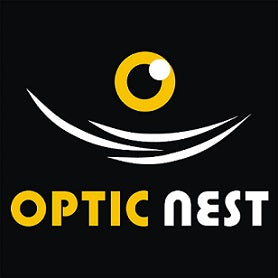
The impact of Stellest Lenses | Optic Nest
A Real Case Study of Harini Karthik :
Myopia, commonly known as nearsightedness, is a growing concern among children and adolescents worldwide. As the prevalence of this condition increases, so does the demand for effective management strategies to prevent its progression. One such innovation in myopia management is the use of Stellest lenses, designed specifically to slow the progression of myopia in children. The experience of Harini Karthik, a 15-year-old who struggled with rapidly increasing myopia, provides a compelling case study on the efficacy of Stellest lenses.
Harini’s journey with myopia began at the age of 12 when she was first diagnosed with a mild myopic correction of -0.50 diopters. Like many young individuals with myopia, her condition did not remain static. Every nine months, Harini’s eye power increased, ultimately reaching -3.00 diopters by the time she was 14. This significant and rapid progression caused concern not only for Harini and her family but also for her eye care professionals. Myopia of this magnitude at such a young age can lead to serious long-term eye health risks, including a higher likelihood of developing conditions such as retinal detachment, glaucoma, and cataracts later in life.
Faced with this situation, Harini’s doctor suggested exploring myopia management lenses as a last effort to control the escalating power. After consulting with Optic Nest, a leading optical provider, Harini’s parents were introduced to Stellest lenses. These lenses, which are at the forefront of myopia management technology, are designed to slow down the progression of myopia by altering the way light enters the eye, thereby reducing the strain on the eye’s focusing mechanism.
However, the decision to purchase Stellest lenses was not straightforward. The lenses were priced at Rs. 16,500, a considerable amount for most families. Despite the potential benefits, Harini’s parents had to weigh the cost against the uncertainty of the outcome. Understanding their concerns, Optic Nest offered a 10% discount, making the price more manageable. Ultimately, Harini’s parents decided to invest in the lenses, hoping that this would be the solution they were seeking.
The results, as it turned out, were promising. As part of Optic Nest’s routine follow-up, Harini’s eyes were screened regularly after she started using Stellest lenses. Remarkably, for 14 months, Harini’s myopia remained stable, with no significant increase in her eye power. When a minor change of -0.25 diopters was eventually detected, the decision was made to leave it uncorrected, as it was considered insignificant in the context of her overall eye health. This minor change was a stark contrast to the rapid progression she had experienced in the years prior to using Stellest lenses.
Now, 15 months after the initial fitting, Harini’s myopia has remained almost unchanged, a testament to the effectiveness of Stellest lenses in managing myopia. This outcome aligns with the claims made by the manufacturers of Stellest lenses, who state that these lenses can reduce the progression of myopia by 67%. However, in Harini’s case, the reduction appears to be even more significant, with an estimated 80% decrease in the rate of progression.
Harini’s case underscores the potential of Stellest lenses to make a substantial impact on the lives of children with myopia. For many families, the financial investment in such lenses may be a barrier, but Harini’s experience suggests that the long-term benefits can far outweigh the initial cost. By slowing the progression of myopia, these lenses not only preserve vision quality but also reduce the risk of future eye health complications.
In conclusion, the case of Harini Karthik demonstrates the efficacy of Stellest lenses as a powerful tool in the management of myopia in children. While the cost of these lenses may be a concern for some, the significant reduction in myopia progression, as evidenced by Harini’s experience, makes them a worthwhile investment for the future of children’s eye health. As myopia continues to rise globally, innovative solutions like Stellest lenses offer hope for controlling this pervasive condition and improving the quality of life for those affected.
